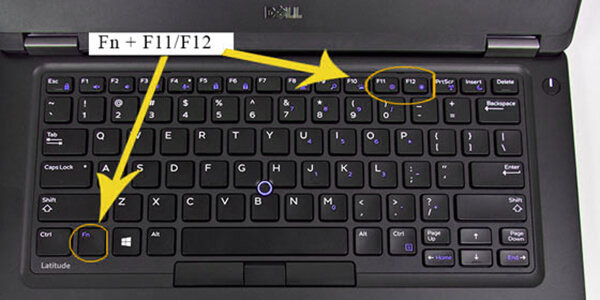Introduction:
In the realm of digital convenience, where every keystroke can make a significant difference, the importance of shortcut keys cannot be overstated. One such keystroke combination that holds the key to a seamless user experience is the brightness shortcut key In this article, we will explore the realm of brightness shortcut keys, their utility, and how they contribute to a more efficient and enjoyable computing experience.
Understanding Brightness Shortcut Keys:
Brightness shortcut keys are specialized key combinations designed to control the brightness of your display. Whether you’re using a laptop, desktop, or external monitor, these shortcuts provide a quick and convenient way to adjust the luminosity of your screen. The keys are typically located on the top row of your keyboard and often include icons representing a sun or a lightbulb.
Enhancing User Experience:
The primary purpose of brightness shortcut keys is to enhance the user experience by offering instant control over display brightness. With a simple keystroke, users can adapt their screens to different lighting conditions, minimizing eye strain and optimizing visibility. This is especially crucial for those who spend long hours in front of their screens, be it for work or leisure.
Energy Efficiency:
Beyond user comfort, brightness shortcut keys contribute to energy efficiency. Lowering the brightness during periods of low ambient light can reduce power consumption, extending battery life for laptop users and promoting eco-friendly practices for desktop users. This small adjustment can have a significant impact on overall energy conservation.
Customization and Adaptability:
The beauty of brightness shortcut keys lies in their adaptability. Most operating systems allow users to customize these shortcuts, enabling a personalized experience. Users can choose their preferred key combinations, making it even more intuitive and ensuring that adjusting brightness becomes second nature.
Accessibility Features:
Brightness shortcut keys also play a role in making technology more accessible. For individuals with visual impairments or sensitivity to bright lights, the ability to quickly and easily adjust screen brightness can be a game-changer. This feature promotes inclusivity in the digital landscape.
Multifunctionality in Operating Systems:
Operating systems often integrate brightness shortcut keys into a broader set of controls. For example, on Windows and macOS, these shortcuts are often part of a larger set that includes volume control, media playback, and display orientation. This integration streamlines the user experience and consolidates essential controls within arm’s reach.
How to Use Brightness Shortcut Keys:
Using brightness shortcut keys is a straightforward process, but the exact steps may vary slightly depending on your operating system. Here’s a general guide:
Windows:
On most Windows laptops, the brightness keys are labeled as F5 and F6.
Press the “Fn” key along with the brightness key to adjust the brightness levels.
macOS:
On MacBooks, the brightness keys are labeled with a sun icon.
Simply press the “F1” and “F2” keys to decrease or increase brightness.
Linux:
Linux distributions often have different key mappings, but they can usually be customized in the system settings.
Conclusion:
In the grand tapestry of keyboard shortcuts, the “brightness shortcut key” stands out as a beacon of user-centric design. Its impact on user experience, energy efficiency, and accessibility cannot be overstated. Incorporating this simple yet powerful shortcut into your daily computing routine can significantly enhance your interaction with digital devices. As technology continues to evolve, it’s these small but impactful features that pave the way for a more intuitive and enjoyable user experience. So, the next time you find yourself squinting at a too-bright screen or struggling to see in dim lighting, remember the power that lies within the brightness shortcut key – a key to a more luminous and comfortable digital journey.


